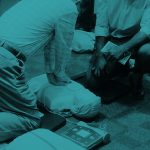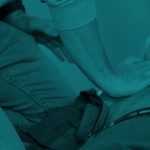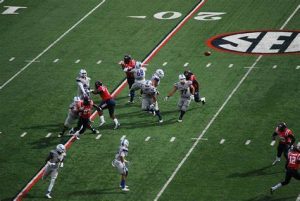
Optimum method for defibrillation Pad Placement
In the event of sudden cardiac arrest (SCA), the heart is unable to pump the blood that is needed to the body’s vital organs. The heart must be shocked using an automated external defibrillator (AED) to interrupt the irregular activity and allow the heart to resume a normal cardiac rhythm.
Electrodes, otherwise known as pads, adhere to a victim’s chest and connect to the defibrillator. The pad allows the AED to determine the heart’s rhythm, and if necessary, conduct current to the heart.
Placing AED pads correctly is essential for ensuring that the defibrillator works properly and allows for the most direct and unobstructed path of transthoracic current (TTC). The correct placement varies between children and adults, though, and there are some unique situations where the general rules don’t apply.
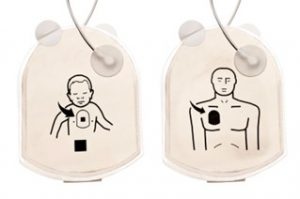
Figure 1: Typical Child and Adult AED pad example
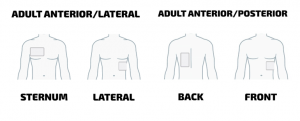
Figure 2: Different placement options for AEDs on adults
Difference between Anterior-posterior vs Anterolateral
There are two basic positions for AED pad placement:
- Anterior-posterior (or “front-and-back”) placement: One on the front and one on the back.
- Anterolateral placement: One on the right side of the chest and one on the lower part of the left chest wall (or a few centimetres below the left armpit, over the ribcage)
The first position is usually used on children, and the second position is used on adults. However, an anterior-posterior placement can be used on adults as well with slightly different pad placement. Instead of placing the defibrillator pads on the centre of the chest and back, place one pad just below the left nipple and the second pad on the left side of the back, directly below the scapula or wing bone.
Pad Placement on an Adult
According to experts, older adults are the group most likely to suffer from cardiac arrest. Although most AEDs have a child setting or are compatible with child pads, these devices typically come equipped with adult pads as the default accessory.
Generally, defibrillator kits will tell you where to place the pads on adults using both audio prompts and/or visual diagrams. However, the general rule is to position one pad over the upper right side, otherwise known as anterior-lateral of the patient’s chest, and the other on the lower left side of the patient’s chest (as shown in figure 2). This creates a pathway through the heart muscle that allows the device to shock the heart into action. Alternatively, you may choose to place pads in an anterior-posterior position, or front-back (figure 2).
Pad Placement on a Child
Children suffering from sudden cardiac arrest are treated in the same fashion as adults but require less energy or shock during defibrillation. The current to be delivered must be reduced, using specially designed paediatric pads.
The American Heart Association recommends that for children under 8 years old, ideally use paediatric pads so that the pads do not overlap during defibrillation. To ensure safe paediatric defibrillation, the best location for pads is the anterior-posterior (front-back) configuration (see figure 3). One electrode is placed on the front (anterior) chest wall and the other on the centre of the child’s back (posterior). They also state that anterior-lateral placement or anterior-posterior placement may be reasonable to defibrillate paediatric victims.
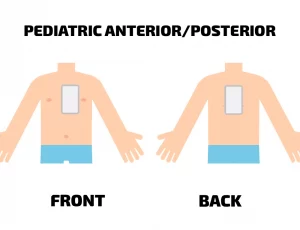
Figure 3: Pad placement for children
Exceptional circumstances
Below are a few things to look out for and what to do when you come across chest hair, a medicated patch, or wet skin.
Chest Hair
If the patient’s chest is quite hairy, the pads might not stick to their skin properly, jeopardising the electric shock. Before placing the pads on the patient, quickly use a razor to shave the hair where the pads will be placed. Most AED first responder kits include razors.
Wet Skin
Electricity and water do not mix, and neither should water and an AED. If the patient is wet, put them on a dry surface, remove their wet clothing, and get the chest dry before applying the pads.
Medicated Patch
AED pads should not be placed on top of a medicated patch, because the patch could make the electrical shock less effective. Before applying the pads, carefully remove the patch (wearing gloves) and quickly wipe the area with alcohol or a towelette.
To Conclude
While there are a few different things to keep in mind, AED pad placement will follow only one of two patterns—front and side or front and back. In both cases, the most appropriate position for the AED pads will be illustrated on the pads themselves and all you need to do is follow the electrode pad placement instructions. You can then deploy the AED, knowing that the shock you are administering could help in the victims’ chances of survival.
Sources
_________________________
www.aedleader.com
www.agajournals.org
www.heartsmart.com
www.cpr.heart.org

